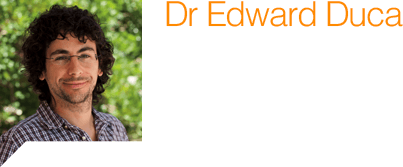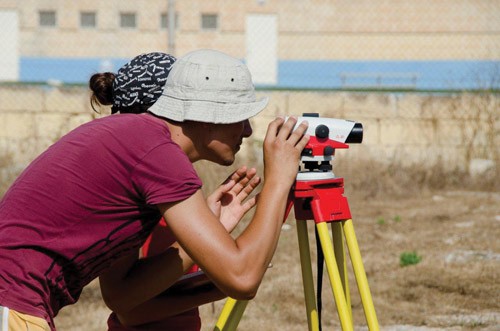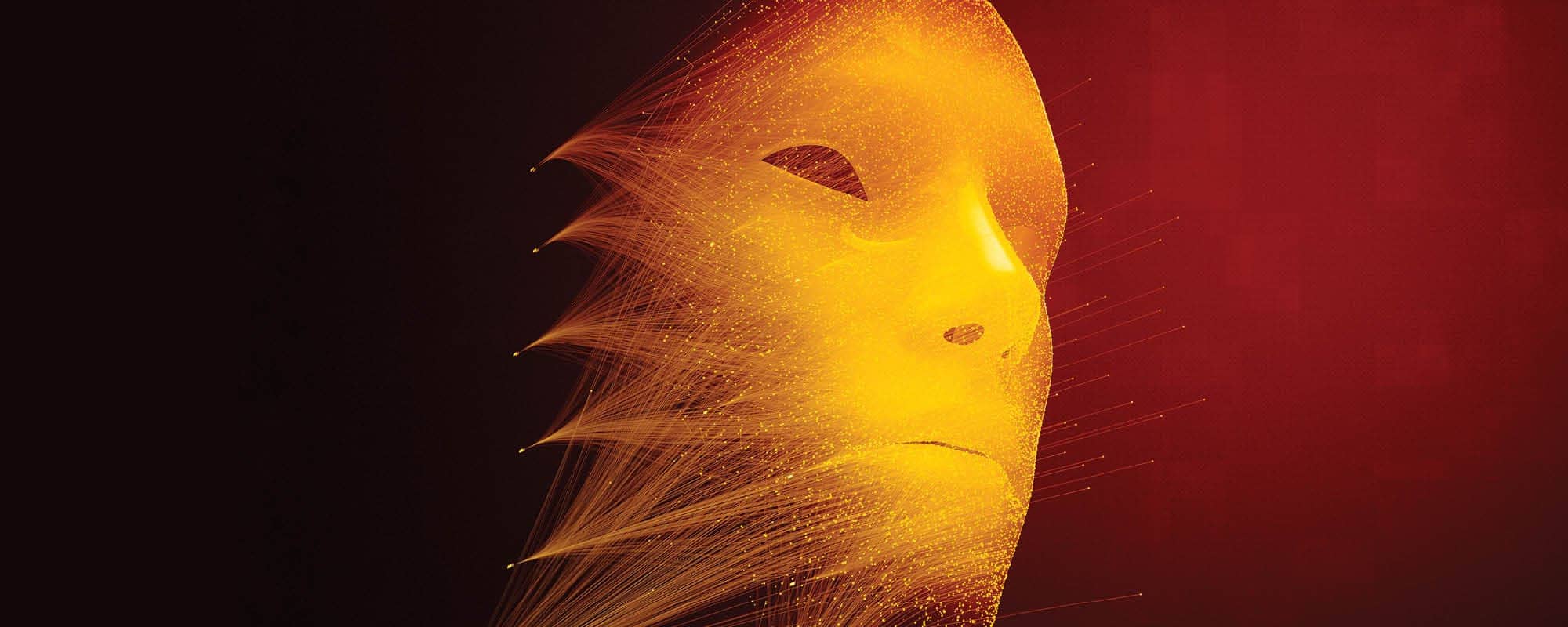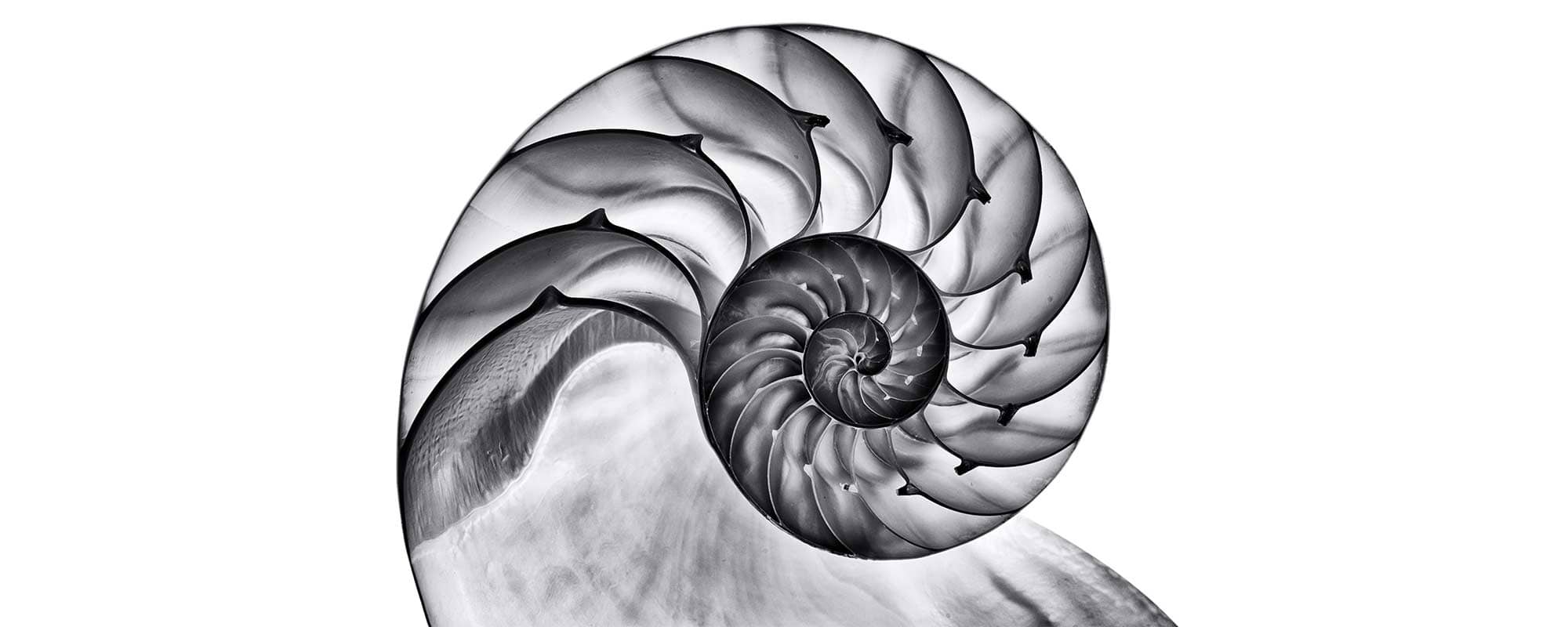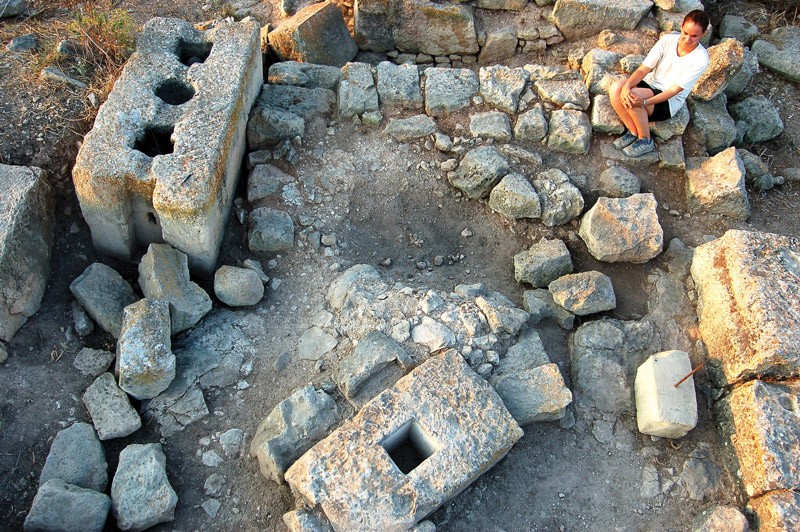
Malta has a gem. Underneath metres of soil lie the remains of a Roman Villa. Archaeologists from the University of Malta have nearly finished excavating the site. The secrets they are digging out of the ground are pretty stunning. Words by Dr Edward Duca.
It was hot, I did not want to touch my own car — the metal was boiling. Summer work in Malta is hard labour. But I was driving to meet teachers, lecturers, and students from the University of Malta who have spent countless summers digging up one of the most important Roman ruins in Malta.Dated from the 4th century bc (a recent dating that pushes it into the Punic period, the Carthaginians) the site combines a residential and industrial area. It is one of two remaining sites in southeast Malta. The Villa’s industry was mainly pressing olives to make olive oil, a hint to the village’s name Żejtun (żejt is Maltese for oil). One can imagine in antiquity, large numbers of these villas producing a particular type of Malta-branded olive oil shipped around the Mediterranean. To think that this valuable site was nearly lost.
And now for some history
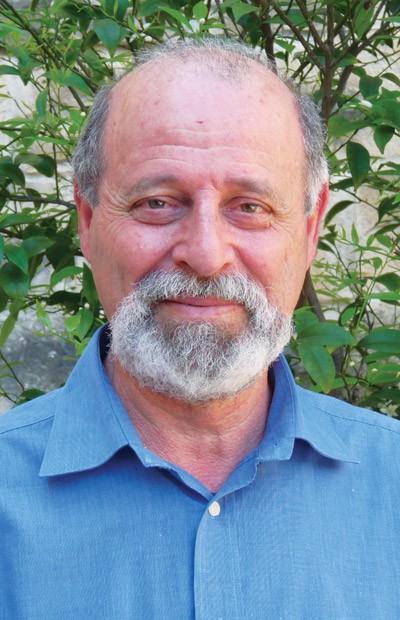
In 1961, while building a school ‘they [construction workers] came across large blocks of stone that indicated an ancient Roman ruin. They did not give it much notice. They cleared enough space for the construction of the first school blocks. In 1964, more bulldozing was done and more stuff was found,’ remembers Prof. Anthony Bonanno (Faculty of Arts, University of Malta), one of the co-directors of the dig. The marks are still clear today.At this point the Museums department stepped in to preserve the area. Between 1970 and 1976, Frans Mallia, the Museums Department Director, and Tancred Gouder, Curator of Archaeology at the time, used workmen and foreign students studying English to excavate the site. The site was divided ‘in rectangular boxes or trenches with letters assigned to them in order to excavate in a proper way,’ Prof. Bonanno continued explaining. Unfortunately, they used the old-fashioned Italian excavation style which he summarised as: ‘removing a huge quantity of earth, without sieving, and following a wall’s edge.’ This leads to many disputes for dating. ‘Eventually we learnt proper stratigraphic excavation techniques from British archaeologists, namely, peeling off layer after layer after having identified the difference between one layer and another,’ a much more logical approach.
Prof. Bonanno’s more accurate methods started being introduced in 1976 when he was working at University [its first lecturer in Archaeology]. With the permission of Dr Gouder he directed two short excavations with small groups of students. He introduced the stratigraphic sheet, which recorded what came from where and in which layer of earth. Before they stopped, they had ‘the most important and spectacular discovery in just a five-day excavation, which was the discovery of a cooking pot with Punic inscription. Eventually we found out that this inscription was identical to scores of others discovered at Tas-Silġ in the 1960s.’
The inscription was dedicated to the goddess Ashtart (in Phoenician, Tanit in Carthaginian), the goddess of fertility, agriculture, seamen, and so on — perfect for Malta. Loads of dedications to her were found in the Punic sanctuary at Tas-Silġ, as expected (covered in THINK issue 02, pages 38–44). The Villa’s inscribed cooking pot revealed that religious life in the Punic and Roman period was incredibly rich and extended outside this sanctuary.
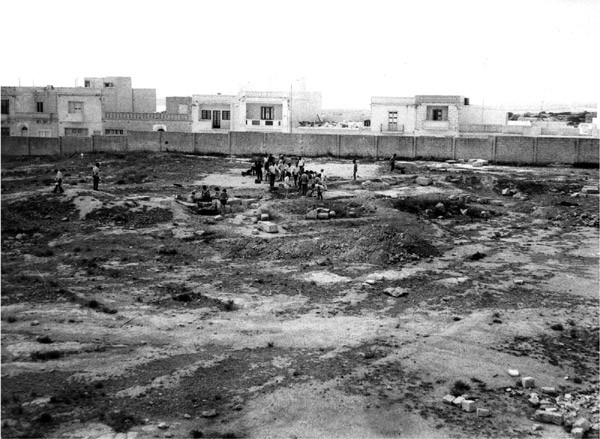
Olive oil for antiquity
In the 1970s, they found huge stone blocks used to produce olive oil. The Villa was equivalent to an olive-oil-producing factory. ‘The pressing of olives to produce olive oil depends on a fairly straightforward process,’ explained Dr Nicholas Vella (University of Malta) the other co-director of the dig site. ‘You need to apply pressure to olives which have had their pips removed. The ancient sources tell us you did not want to crush the pip because that would create an inferior quality olive oil.’ Dr Vella continued to explain how, peculiarly, today the whole fruit including the pip is crushed, then separated later. Today’s olive oil could be worse than the Romans’. Research is needed to find out, once and for all, which process makes the best oil.
To press the oil, a screw is twisted in the anchor stone block, like that found at Żejtun, to lower a weight on top of olives in baskets. This squashes them against a stone press bed extracting the olive oil that runs into channels cut into it. The anchor stone in Żejtun isa very advanced Roman example. ‘I would say this is the Rolls Royce of them all,’ explained Dr Vella excitedly. The press bed to this anchor stone has not yet been found. The archaeologists think it might never be found if future site users reused it elsewhere, a lost treasure.What the archaeologists did find during the dig of 2012, when I visited them, was a small press bed. They found it as part of an ancient wall. ‘This [find] is splendid because we had been missing this from the site, now we have it,’ said Dr Vella. It means that as the villa grew in importance it upgraded its olive oil pressing technology. When the Rolls Royce of olive presses arrived they reused the simpler press bed. Nothing was wasted.
“In the 1970s, they found huge stone blocks used to produce olive oil. The villa was equivalent to an olive-oil-producing factory”
To know your future, you must know your past
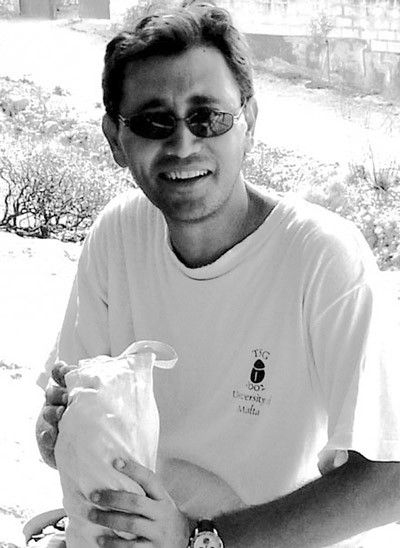
As I was interviewing Dr Vella, we both noticed the roofs around us. Few of the massive flat surfaces were collecting run-off water, most pipes let their water seep into drainage systems or sewers. This would never happen in antiquity. If it did, they would have died. The ancient people of Malta could not extract water from the sea like we can today through reverse osmosis plants.
This Roman Villa was a large complex. Water was precious and they had one cistern, possibly two, that stored water for usage over Malta’s unforgiving summer.
Water was essential, being used for humans, animals, and farming. Water and food were the mainstay of everything. ‘Certainly over here there was a major concern to collect every millilitre of rainwater that fell on this farm’s roofs and store it.’ Covered water channels led the run-off roof water to the storage areas underground.Ancient Roman texts describe how a Roman farm was built and how crops could be raised even in arid environments like Malta. The viability of farming in Malta is also described in other historical texts. At the beginning of British colonial rule, a text from 1811 describes how Maltese soil, despite being shallow and dry, could grow cotton and vines. While we still have vines, we do not grow cotton any more. Surely there are lessons to learn from the old ways.
Archaeology today
Archaeology is a discipline that naturally bridges fields but has some peculiarities. Unlike the sciences, experiments cannot be repeated. ‘Excavation is destructive, since once layers are removed they cannot be put back; we can’t think of an excavation as an experiment,’ explained Dr Vella. On the other hand, archaeology is incredibly rigorous. It helps make sense of history.
The most important principles are identification of a layer, its deposits, painstaking excavation, and documenting absolutely everything. Figuring out a site is tough work. Archaeologists usually work with 10 metre by 10 metre trenches. Now let us use an analogy to understand a site. Imagine looking at a trifle from above, and slowly removing every layer, placing a number to every layer and every deposit, be it cream, custard, or coffee-dipped sponge fingers. Then using these notes to piece together a picture of the trifle. Now, imagine it again. Imagine ‘some kids went in and plunged in their hands, lifted everything, and left you with a mess, this is usually the scenario at a disturbed site,’ illustrated Dr Vella.
To understand this mess, archaeologists use the Harris matrix. This simple method was invented in 1974 by Dr Edward C. Harris. Each deposit is given a number and then the deposit is linked graphically to adjacent deposits or those below. ‘The Harris matrix would help identify what is coming from where,’ explained first year student Luke Brightwell, who was being trained on site. ‘For example, if you have soil on top, then a layer of stones beneath, and a pit going through the layers’, a Harris matrix can answer, ‘which layers did the pit go through? Which is the earliest deposit? […] This is why a lot of time is spent recording the layers.[…] You have to plan the site, dig the layers, and see what kind of material was dug from each layer.’
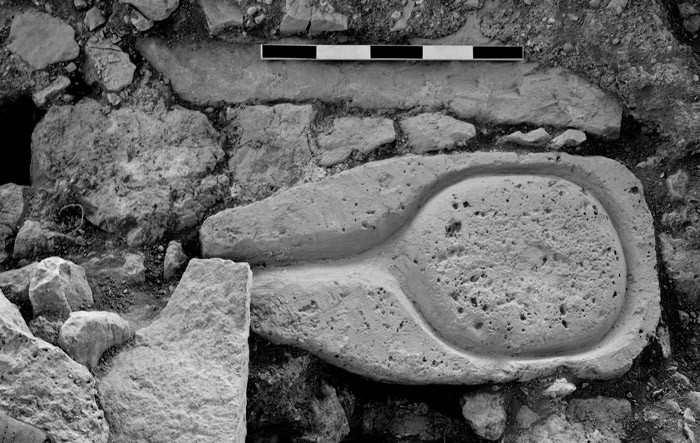
‘The challenge is to recognise each stratum,’ continued Dr Vella. The strata are identified on site by eye. The deposit is tested for colour and consistency, normally by wetting the sample to identify the type of soil: is it silty, sandy or clay? ‘If we realise that we have samples with a good ash content we often take samples in 10-litre or 30-litre buckets. We take them off site, sift them, and pass the deposit through a flotation tank.’ The organic matter floats to the surface, is collected, and studied. Then they can paint a picture of the environment and diet of the inhabitants. The crux is making sure that the layer is not contaminated. For example, ‘if I have roots going through my deposit the likelihood is that you have a contaminated layer,’ which makes it rather useless.
The 2012 dig may have found a gold mine, an untouched (by the 1970s dig) silo pit. Just before they were stopping the excavation the archaeologists uncovered a circular rock-cut feature. ‘The shape of the opening is normally associated with Bronze Age features. […] If it is a Bronze Age silo pit and full of the original material, it’s going to be quite a find. Inside it might be environmental evidence of what people ate, stored, or dumped there.’ The material will be studied by local UoM specialists, but other help might be needed for dating. For example, if the archaeologists are sure about the integrity and origin of a sample they can send it for carbon dating. But, ‘I can’t just send one piece; I have to send half a dozen for it to have statistical value,’ said Dr Vella, making it rigorous but expensive. Dating is vital for archaeology and other techniques are also used.Pottery is a typical dating tool and can be linked to a particular period. Punic pottery is different from Roman and Arabic pottery. Since everything is deposited in reverse order, it is the bottom layer that usually gives a site’s earliest date.
Pottery can even be used to date a wall. For example, to date its construction, ‘I will analyse and date the pottery that ended up in the construction of its foundations. Usually bedrock is cut, the wall is placed in that trench and, if we are lucky, the workmen would have thrown in their pottery together with other rubbish. We look at the latest pottery in the trench fill and if it’s from the 4th century bc, we can safely say that the site is from this period or later,’ said Dr Vella. The Roman Villa had Punic pottery in the construction fill for some of its walls. An older structure — possibly a farm — must have been present and modified.
More accurate than pottery are coins. Coins from the Roman Imperial period had the emperor’s face struck into them. A quick look through Decline and Fall of the Roman Empire by Edward Gibbon quickly gives you the date of each emperor’s reign. Coins are much rarer than pottery, and if both are not present, the archaeologists rely on other dating techniques like carbon dating.
The UoM only runs a one-month excavation every year, but this is followed up by months of research to write up and process the collected documentation and material. All are performed to paint an accurate picture of a site’s history.
“The aim is ‘to train students with the basic skills in archaeological excavation techniques and recording systems’”
Archaeology for Education
This excavation is a student’s practical training. The site ‘is very different from lectures. […] We have to apply what we learnt in lectures over here on site,’ said student Luke Brightwell. The aim is ‘to train students with the basic skills in archaeological excavation techniques and recording systems’ said Dr Vella. Basically, after they graduate the students will be better prepared to handle their own digs whatever they do afterwards. There are many types of archaeologists needed to monitor building projects by the local planning authority (MEPA), the local state heritage regulator and building contrators.
Archaeology also teaches other transferable skills. A dig enables students to build team-working skills, reports teach writing and research skills, while presentations build communication skills. With a bit of creativity and the ability to put yourself out there, abilities learnt from an Archaeology Degree can be adapted to many other jobs.
Even more exciting, UoM archaeologist and lecturer Dr Timmy Gambin wants to plant around 30 olive trees of the Bidnija variety. This variety is unique to Malta and is resistant to flies making it pesticide free, hence organic. They want to reconstruct a Roman era olive oil extraction system and build a small teaching museum on campus, ‘a sort of experimental educational archaeology area,’ explained Dr Vella.
Villa of the Future
Dr Vella wants to find a large flag and plant it near the site. He wants to show what the UoM’s staff and students are doing. He wants the people of Żejtun to know about their history. With Prof. Bonnano, they are working with local NGO Wirt iż-Żejtun to raise awareness about the site. The archaeological team regularly gives seminars to the surrounding community. Ideally, they would have locals participating in the dig, a steep challenge.
Wirt iż-Żejtun and the local council might hold the key to the Villa’s future. When a site is dug up, material, which perhaps was buried and stable for hundreds of years, is suddenly exposed to the elements. The weather has already destroyed the lustre of the beautiful Roman terracotta tiles exposed in the 1970s.
The excavation could be completed in two to three years’ time. After excavating a site, archaeologists usually have two options. They can either bury the site again, which needs re-excavation to be shown to the general public or studied further. Otherwise, it can be sheltered and protected against the elements. This greatly slows its deterioration, allowing the public to visit the site, and the research to continue. Initial steps have already been made by a conservation project co-ordinated by Prof. JoAnn Cassar and Roberta De Angelis (Faculty for the Built Environment, UoM) using funds raised by the cultural NGO Din l-Art Ħelwa through the HSBC Malta Foundation.
Local entities could ‘manage the site through a guardianship deed with the government,’ said Dr Vella. ‘Entities would take care of the site on behalf of the state.’ The site could pull in tourists and locals alike. It would revitalise the area through increased tourism and by acting as a teaching museum. Dr Vella imagines the site being used to teach physics, biology, and Maltese history in a fun and living manner. Maybe, in five years time, I will be driving to take visiting friends to Malta’s newest visitor attraction: The Roman Villa of Żejtun.
Students thinking about Archaeology
This dig is a training excavation. The students are being trained to perform archaeological excavations after graduation. I spoke with to three students; below are their thoughts.
Annalise Agius
B.A. in Archaeology (Hons) (2nd Year)
Annalise is the most enthusiastic student I met. The dig made her fall in love with archaeology. ‘The course is fantastic.’ Annalise goes further, ‘it gives you motivation because you know that as soon as you finish your exams you know you’re going to be here.’ Her enthusiasm is infectious. She loves the opportunity of this dig to discover Maltese history, but is open minded enough to go abroad for the right opportunity. Her final words: ‘a student in archaeology must experience a dig to know what archaeology is about. Because once you experience the dig you either like it or you don’t, but if you like it, it will be fantastic. You just want to dig, dig, and dig.’
Joseph Grima
B.A. in Archaeology with International Relations (1st Year)
Joseph is a Gozitan student who wakes up every day at 5 a.m., catches the 6 a.m. Gozo ferry to Malta then arrives on site at 7:20 a.m. Joseph grew up around antiques, ‘my father collects military vehicles and my uncle also collects antiques. So I grew up conscious of old things, a collector.’ Choosing archaeology was a no brainer for him. ‘At University I learnt who they [Phoenicians] really were, why they left their homeland.’ However, he is still uncertain what he will do with his degree. ‘Too far from where I stand right now, I tend to take it as it comes. I’ll try my best.’
Luke Brightwell
B.A. in Archaeology with Geography (1st Year)
Luke was going to choose to specialise in geography till he came on site. ‘This experience caused this change, even the lectures. The way the lectures are given is completely different […] full of information and, for example, the lecturers show you a picture of an object and then you start discussing the item with them: its period, its function, its style of decoration, and why, which is a lot more engaging and practical.’ He also already knows what he wants to do afterwards. ‘I would like to become an archaeologist. Complete my first degree, then do a Master of Arts to continue broadening my knowledge.’
Students are monitored by Dr Dennis Mizzi (Dept. of Oriental Studies, UoM), Rebecca Farrugia (UoM), and Maxine Anastasi (University of Oxford, UK)
